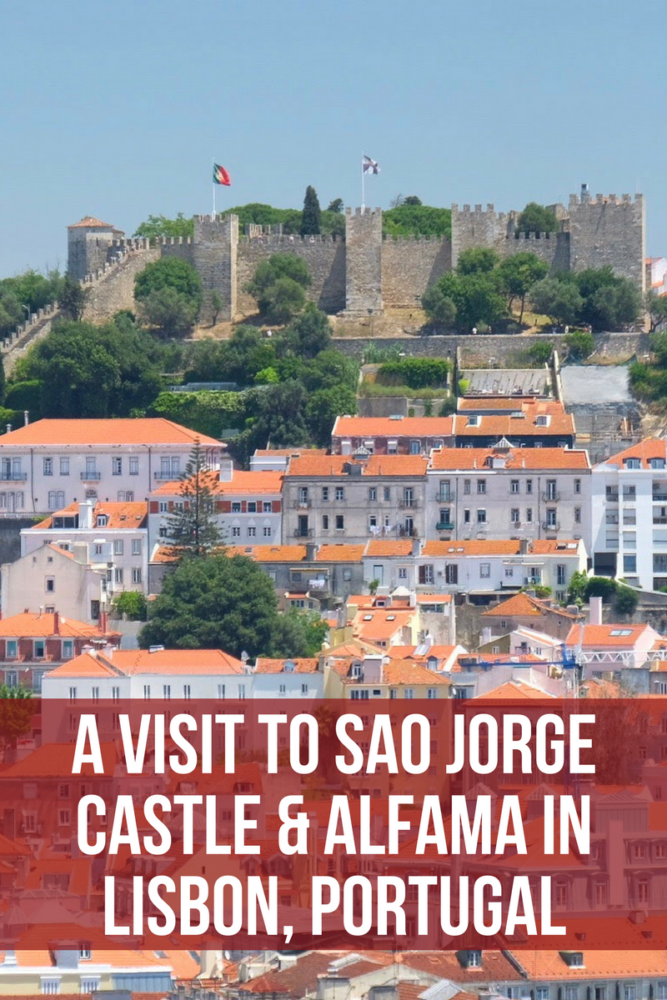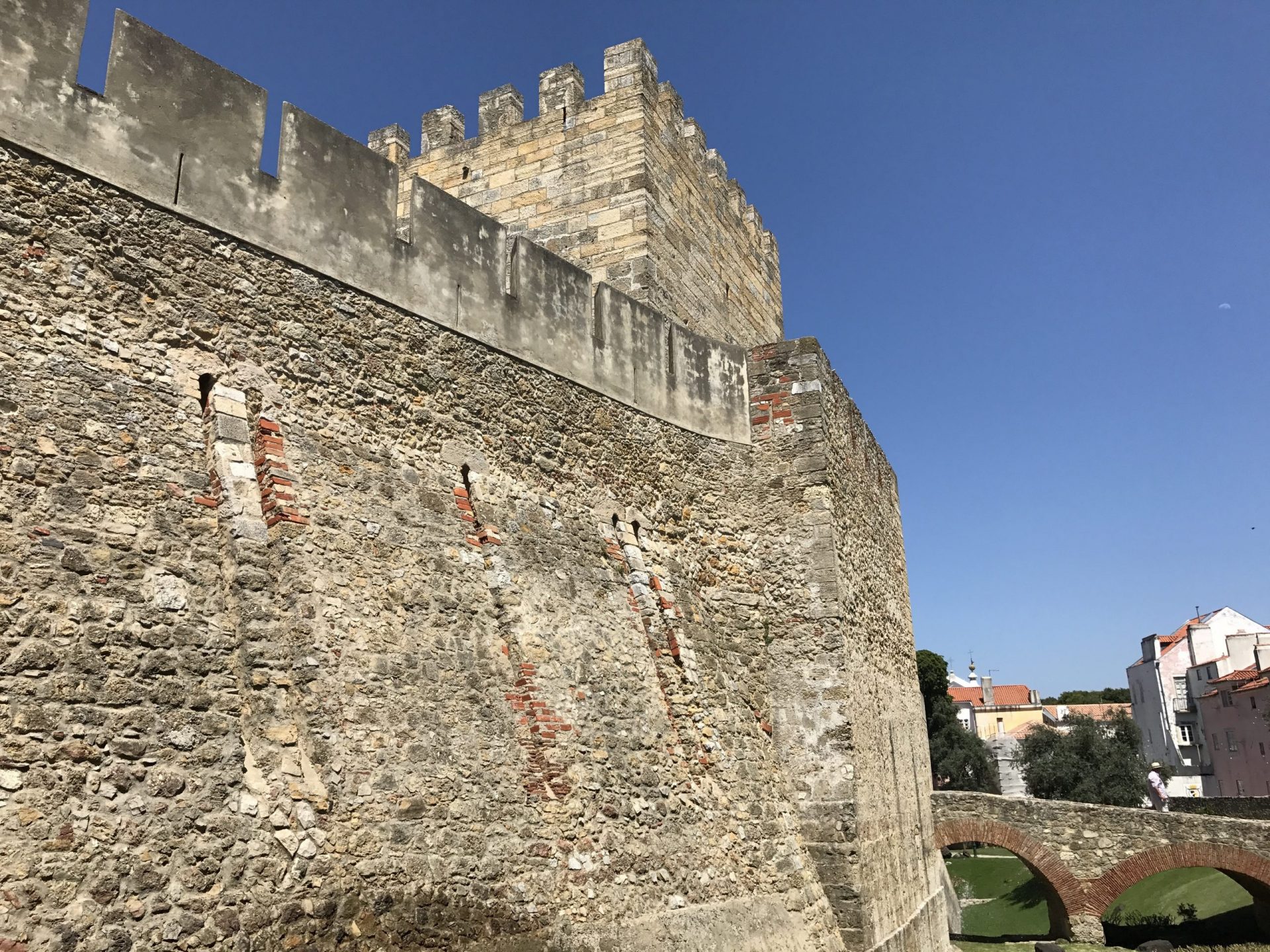This article has partner links that I may receive compensation from at no cost to you. Thank you for supporting my site by using them!
Lisbon’s rich history can be found around any corner, but it really comes to life in the famous Alfama district. Sao Jorge Castle is the centerpiece of the neighborhood, looking down across it and the rest of the city from high on a hill. No visit to Lisbon is complete without a day spent at the castle and the surrounding medieval streets of the Alfama.
If you are staying elsewhere in Lisbon, there are several ways to get to Sao Jorge Castle and the Alfama. I went from the Bairro Alto. After having a great seafood lunch, I headed past Miradouro de São Pedro de Alcântara, a viewpoint with magnificent views across Lisbon, particularly toward the castle.
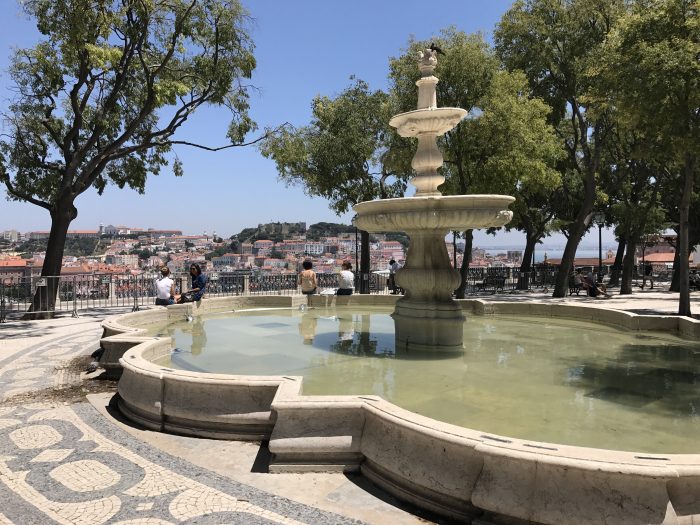
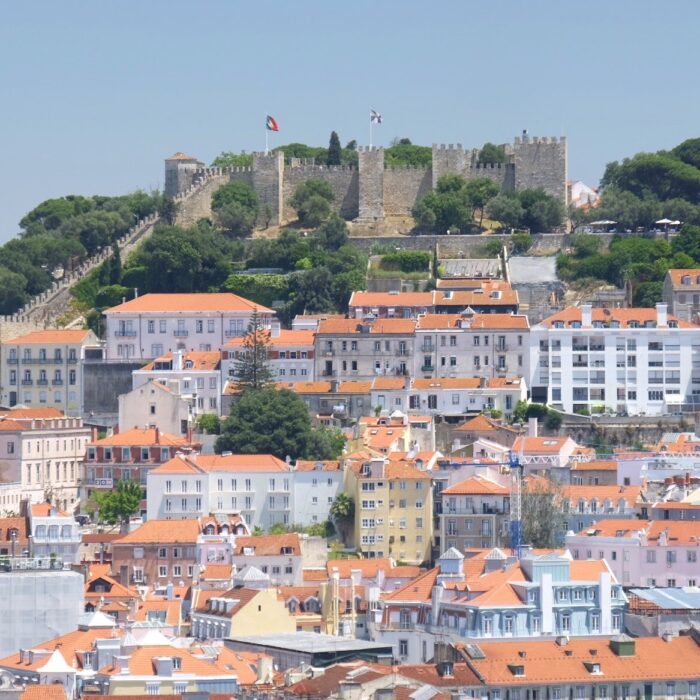
It makes for a nice start to your journey. Of course, thanks to Lisbon’s geography, you’ll be heading downhill, then back uphill. I chose to walk, following one of Lisbon’s famed funicular railways, the Ascensor da Glória. You can also get to the Alfama via the Lisbon tram, which you should ride at some point during your visit, no matter what.
It was a warm day, which became even more evident as I climbed up to the castle. This particular approach from the west involves a lot of stairs.
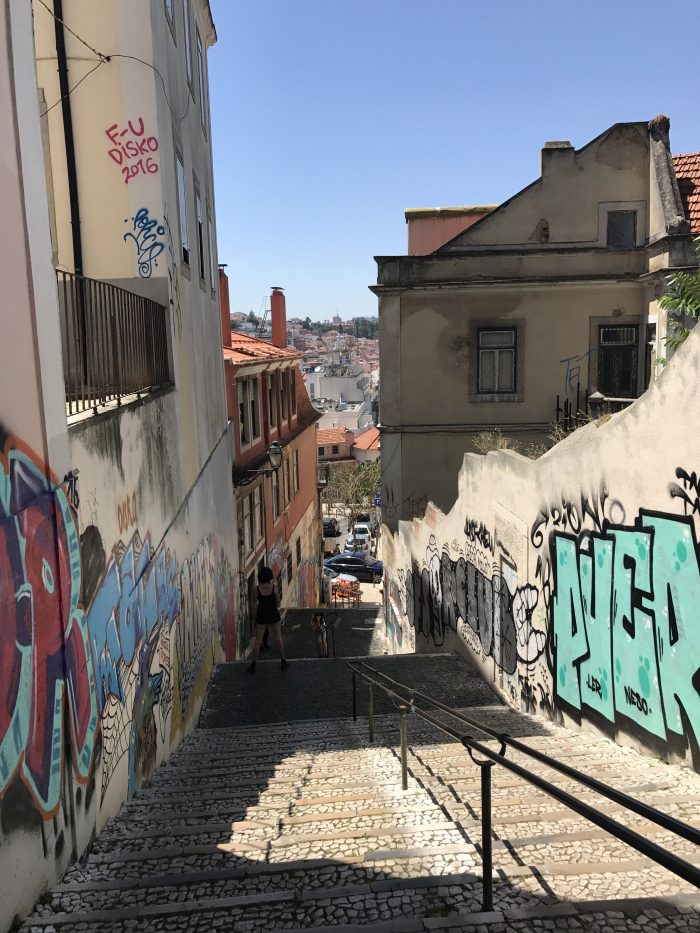
These streets along this side of the castle are among the quieter ones in the center of Lisbon, as most people heading to the castle & Alfama approach from the south rather than doing the steep climb, though there is an elevator you can also take. The main road along this side of the Lisbon castle, Costa do Castelo, is lined with shops, cafes, and hotels, particularly as you get closer to the heart of the Alfama. Head toward the north & east, and the crowds will tell you you’ve arrived.
Book your hotel in Lisbon now!
One could spend hours exploring the Alfama. Its winding roads and overlooks are a photographer’s delight. I ended up there several times during my trip to Lisbon. On this first visit, I poked my way around a few of the streets, then headed into the castle grounds.
Castelo de Sao Jorge dominates Lisbon’s skyline from afar. Inside the grounds, there’s a little something for everyone. The huge overlook at the entrance provides sweeping views across the Tagus River to the Atlantic Ocean.
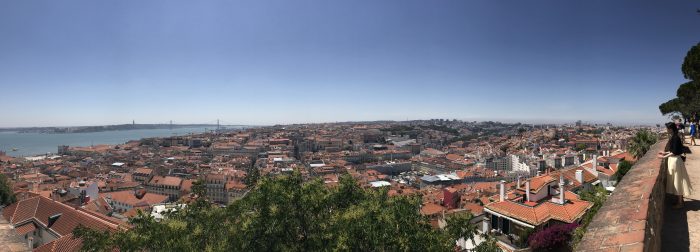
The Ponte 25 de Abril spans the waters. It will look immediately familiar to people from San Francisco, as it resembles a combination of the Golden Gate Bridge & the Bay Bridge.
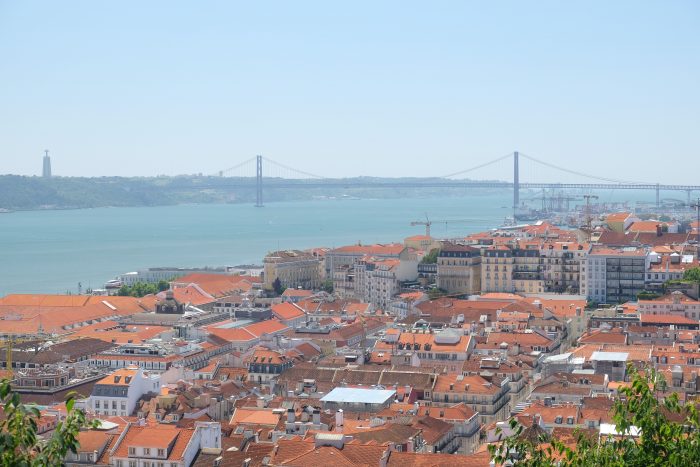
Thanks to being high on a hill, there’s a nice cooling breeze at Sao Jorge Castle. Right below the walls, there are beautiful houses & gardens.
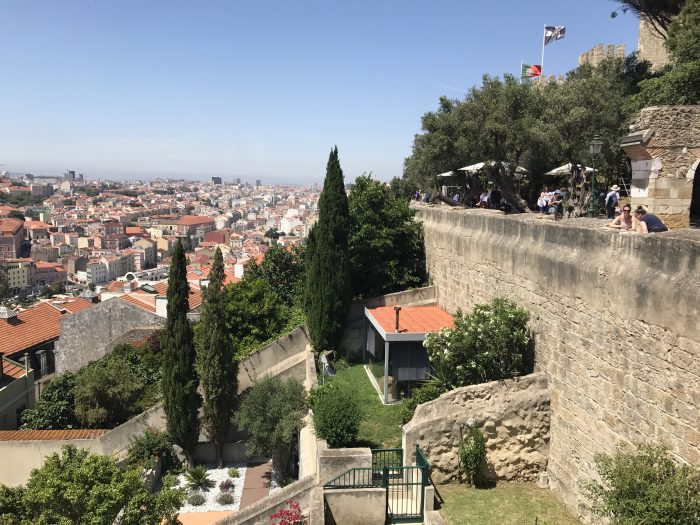
If, for some reason, you’re not into pretty views or castles, there is a stand that sells wine & port. I like how the Portuguese do things.
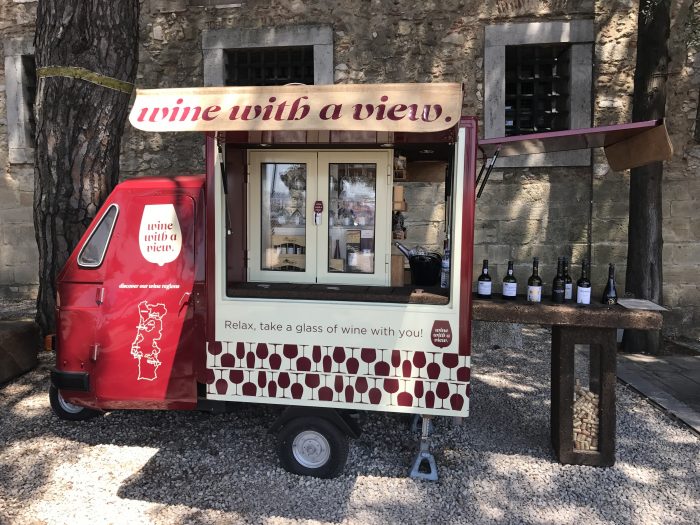
This path along the edge of Lisbon Castle actually leads to a dead end due to the castle’s construction.
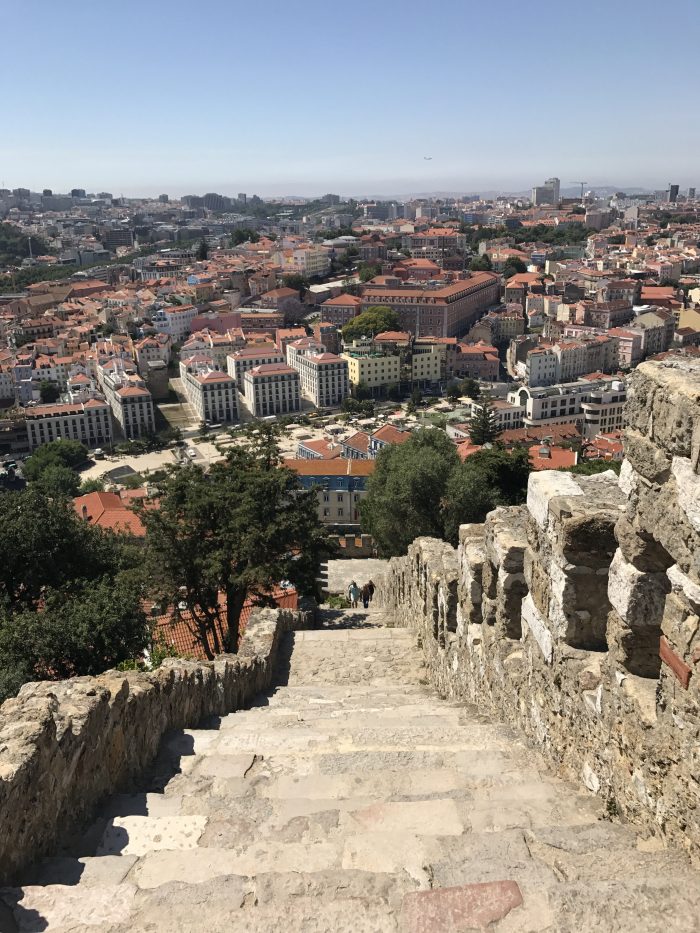
Backtrack a bit, and you’ll find the gate across the moat that leads to the inner part of Lisbon’s castle. Peacocks roam the grounds as guards.

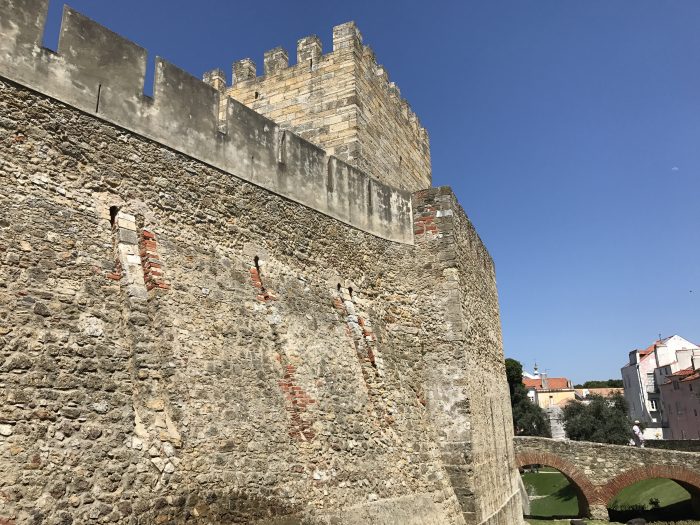
Inside this central part of Castelo de Sao Jorge, you can explore as you wish. It’s very much a maze, which helps disperse crowds once you’re past the entrance.
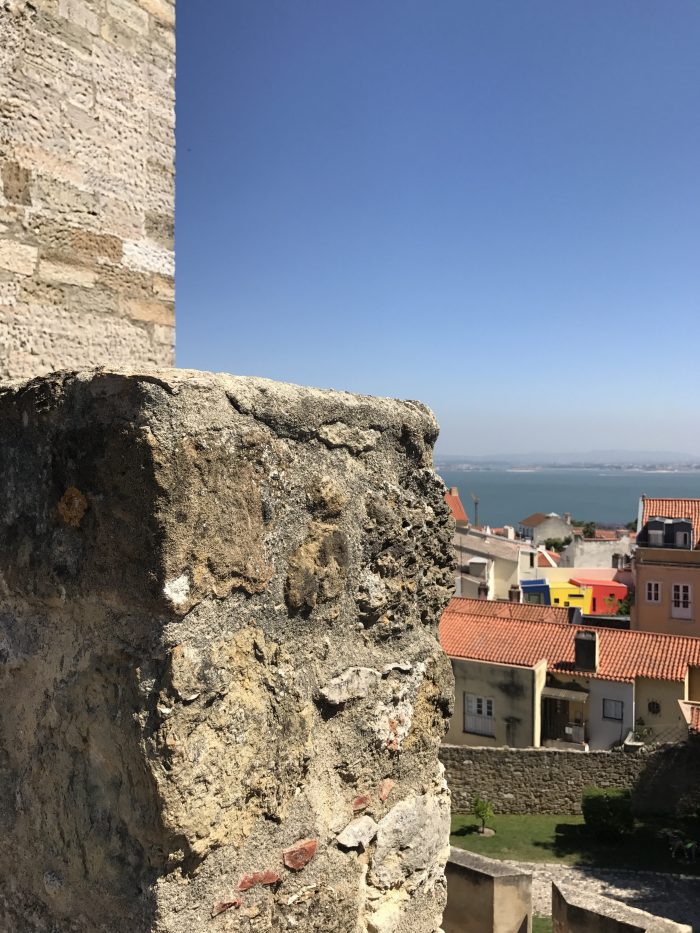
There are archways and walls to climb and walk along. Each section provides different watchtowers and viewpoints, giving 360-degree views of Lisbon. There is also a Camera Obscura, which lets in 20 people every 20 minutes.



After walking all over the center of Sao Jorge Castle, I headed to a quieter section of the grounds. This area contains an archeological site. In 1998, a new parking lot was being built next to the castle. While digging, they found ruins from three different eras. Thankfully, those ruins have been carefully excavated & preserved rather than being paved over. Now, you can access this section by walking along a wall of the castle and then descending into the site.
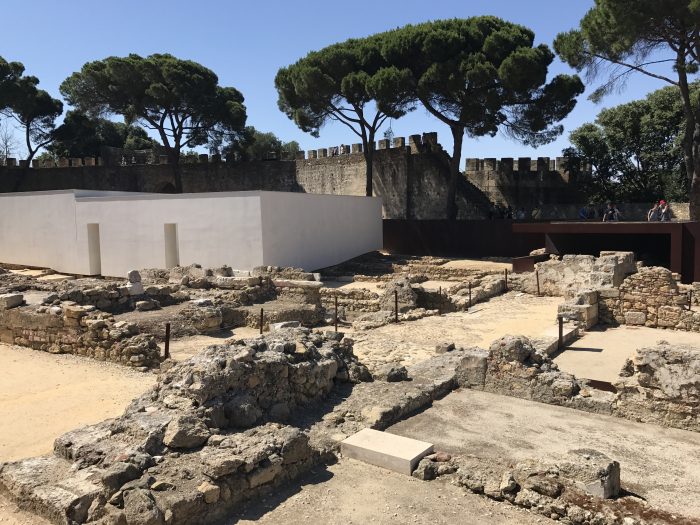
While it’s possible to walk around the perimeter of the ruins, free guided tours are also offered. I highly recommend taking one of the 30-minute tours, as you get a full explanation of each epoch of ruins (Iron Age, medieval Christian, and Islamic Moorish), as well as access to all of them for a closer look. I was one of just five people on my tour.
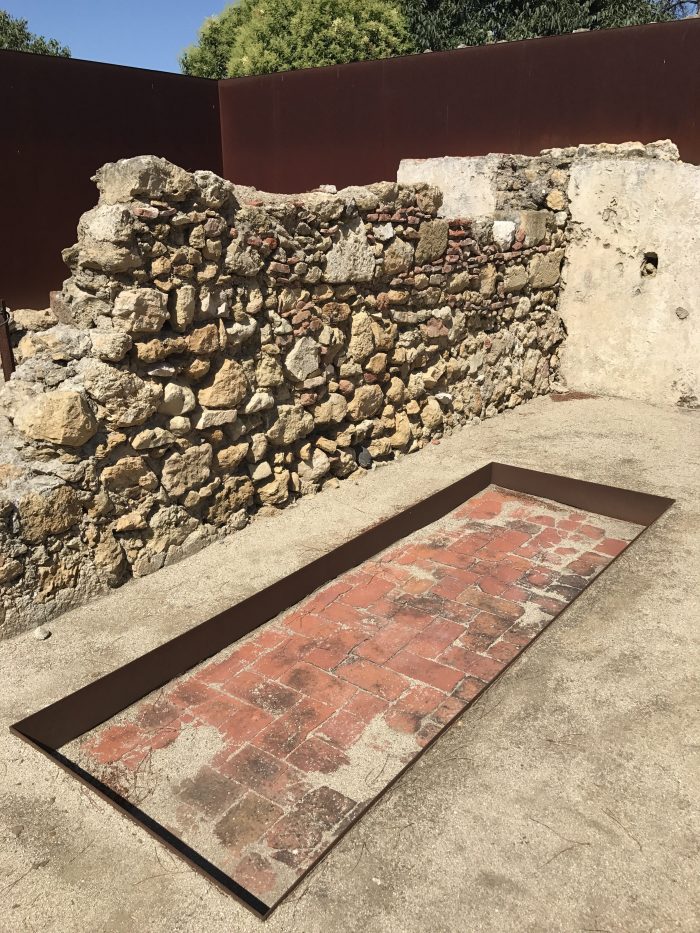
The museum & cafe has more artifacts from archeological excavations on the grounds of Lisbon Castle.
After I visited Sao Jorge Castle, I exited toward the south, passing by several overlooks with views toward the sea. Down below, there were small squares with flowering trees.

On another visit to the Alfama, I took the historic tram through the neighborhood. While the trams can be packed (I recommend getting on at the start of the line and doing a full loop), it’s a nice way to scope out some of the back parts of the Alfama for a future visit.
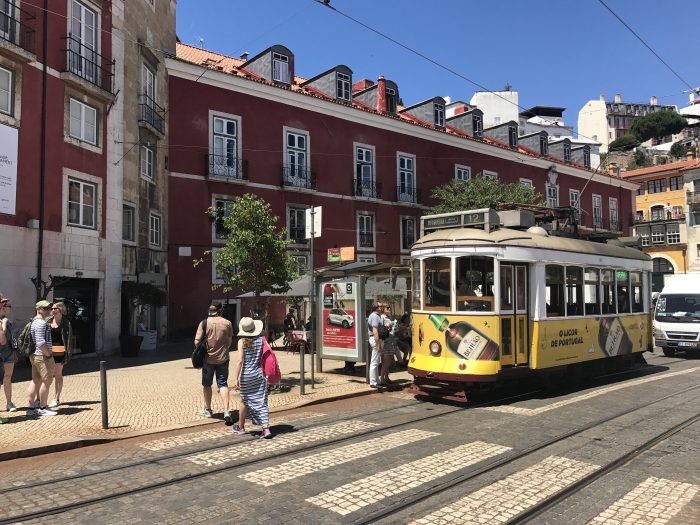
There are plenty more overlooks, plus cafes, churches, and museums. Some of the prettiest overlooks are Miradouro de Santa Luzia, Miradouro das Portas do Sol Observation Deck, Miradouro Sophia de Mello Breyner Andresen, and Miradouro do Recolhimento.


I went back to check out Lisbon Cathedral (Sé de Lisboa), which occupies a photogenic spot at the curve of a tram line. The cathedral is free to enter, though the treasury & cloisters have a fee. It’s a nice break from the sun on a hot day.
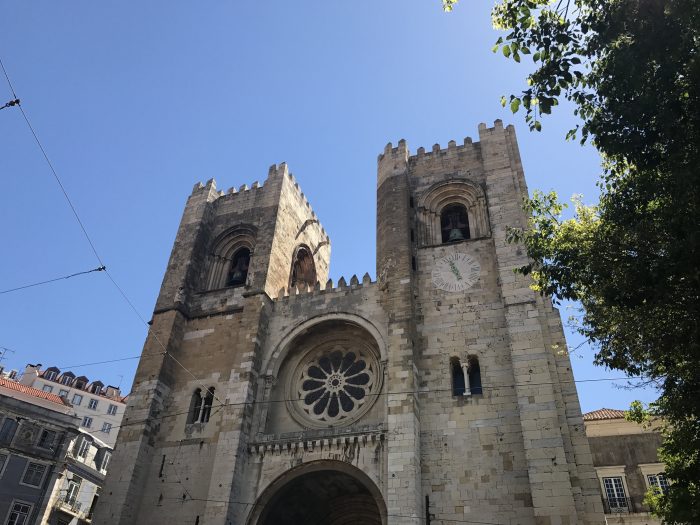
I also visited the Museu do Aljube (Museum of Resistance and Liberty). The museum is dedicated to life in Portugal under dictatorship from 1926 & 1974. This is an aspect of Portuguese history that you’re not likely to learn about elsewhere during your visit. It’s such fresh history, though, that it’s important to learn, as you’ll encounter people who lived during those times. Entry is €3, and I highly recommend visiting if you are interested in history. I especially enjoy museums that tell the history of the ordinary citizens of a place rather than solely the upper classes.
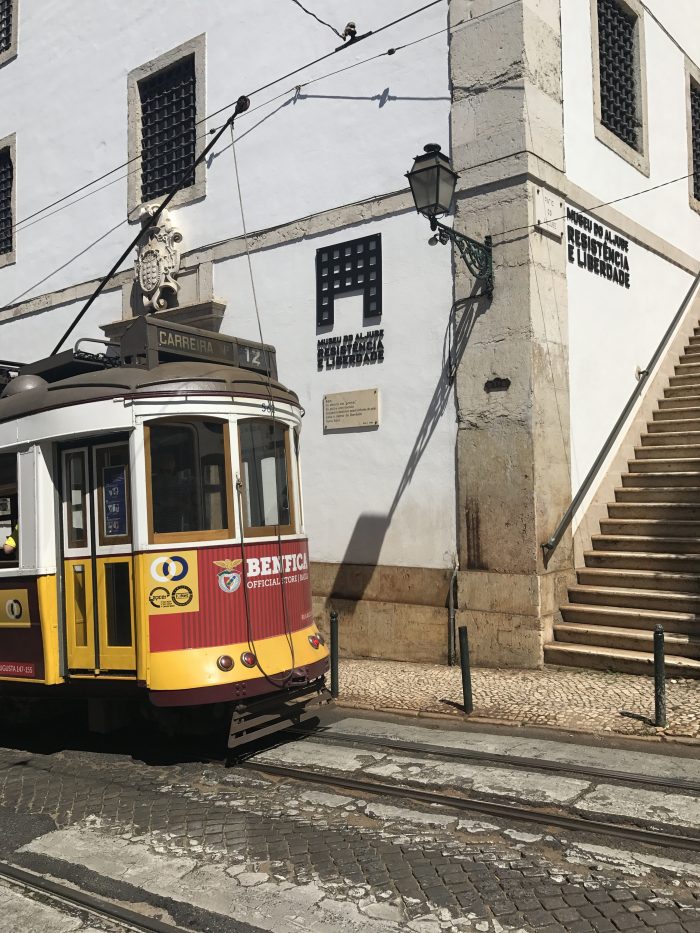
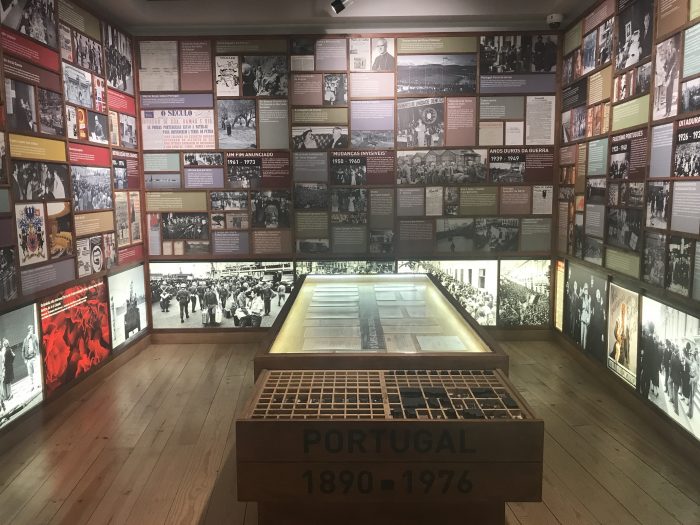
The building was a former prison. Part of the exhibition outlines how a country can descend into such a situation. It’s certainly eye-opening to anyone who fears that something similar might happen in their own country. Many of the descriptions were only in Portuguese, but important displays were also in English. I recommend using Google Translate’s live translation through the camera of your phone to find out more. There’s also a nice view of the Cathedral from the upper floor.

Portugal’s rich history is fascinating. Nowhere is it more present than at Sao Jorge Castle & the Alfama. While many of the focal points of the neighborhood include sites that have been present for hundreds or even thousands of years, Portugal’s history is still being told. Neighborhoods like this are popular for a reason. While Lisbon is an expansive city with many great neighborhoods worth exploring, sometimes the classics just can’t be skipped.
